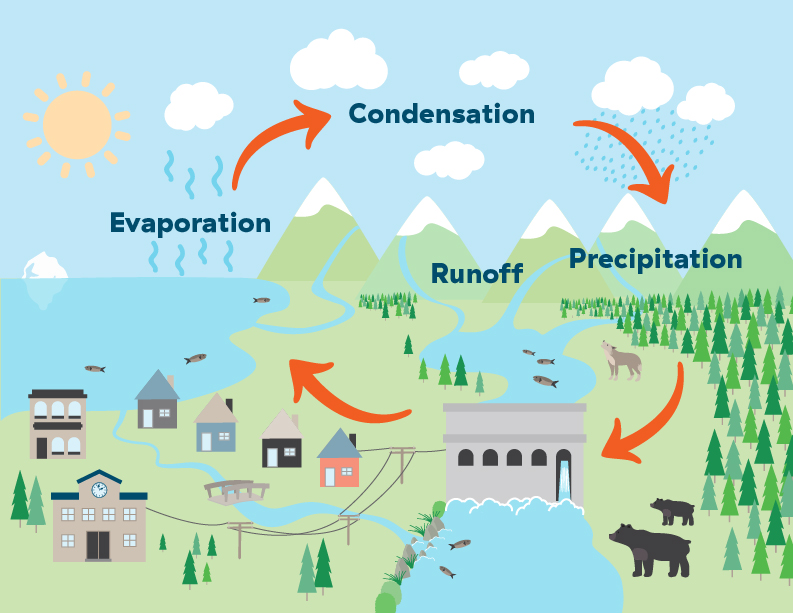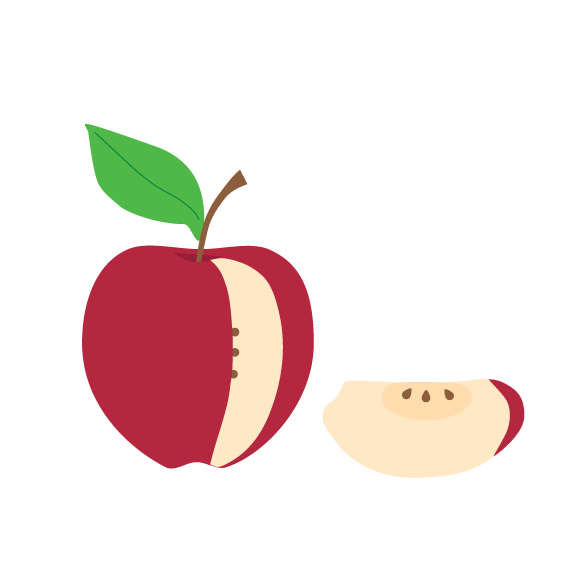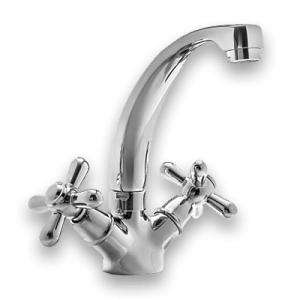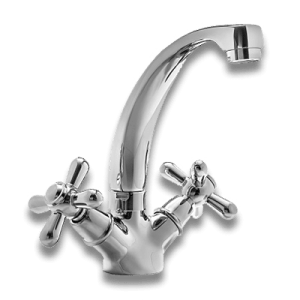How much water is in the world?
Rain, snow, rivers and oceans – there’s a lot of water in the world. Or is there?

Overview
When you think of rivers, lakes and oceans there seems to be an endless supply of water in the world. But by simply cutting up an apple, we can make a powerful analogy about the amount of fresh water that’s available and why it’s important to take care of the water around us.
Instructions
What you'll need
- “Water cycle” image
- Apple and knife

- Display the “Water cycle” image and ask students to point out different sources of water (rain, rivers, lakes, oceans).
- Show students an apple and explain that it represents all the water on earth. Have them guess how much of the water on earth is salt water and how much is fresh water.
- Now cut a small sliver out of the apple.
- Tell students that 97 per cent of all water on earth is salt water, and the remaining 3 per cent is fresh water. The sliver of apple represents fresh water.

- Cut the sliver into thirds.
- Two-thirds of fresh water isn’t available to us. Talk with the students about why some water isn’t accessible because it’s frozen in ice, snow or glaciers.
- One-third of water (or 1 per cent of all water on Earth) is in lakes, rivers and in the ground (groundwater).
- We as humans, just like all living things, need water to survive. We get our water from the 1 per cent of fresh water and need to make sure there’s enough to go around.
- This means we have to take care of our water sources by keeping them clean and trying our best not to waste water.
- Wrap up the demonstration with a discussion about water and water sources.
- Do students know any local water sources?
- Do they know where the local drinking water comes from?
- Are there any questions about water and water sources?
Modify or extend this activity
- Go for a walk in the community or use a map to identify local water sources and where the school gets its water from.
- Explore the water cycle in more detail by watching a fun video about the "Power of falling water".
Curriculum Fit
Grade 2 Science
Content
- Water sources
- Water conservation
- Water cycle
Curricular competencies
Questioning and predicting
- Ask questions about familiar objects and events
Processing and analyzing data and information
- Experience and interpret the local environment
Evaluating
- Consider some environmental consequences of their actions
Applying and innovating
- Transfer and apply learning to new situations
Assessments
- Assess student participation in class discussion.
Teaching Notes
Water sources
Water is important to all living things, including plants and animals. Living things depend on water for food, drinking, habitat and more. For humans, water is also used for things like washing, farming and generating electricity. Water comes from five main sources:
- Surface water includes rivers, streams and lakes.
- Groundwater is the water found in cracks and spaces in the soil and rock.
- Precipitation comes in the form of rain and snow.
- Frozen water is stored in glaciers and icefields.
- Oceans are salt water and form the majority of water on earth.
Water covers almost 80% of Earth’s surface, but there is only a limited amount of fresh water available to living things, including humans.








